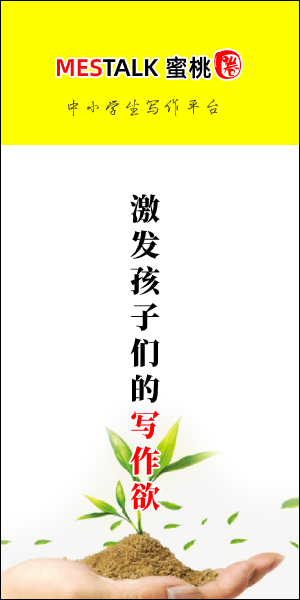首页 >
箭石
✍ dations ◷ 2025-10-08 18:15:29 #箭石
箭石类动物(学名:Belemnoidea),旧作箭石下纲,是一个已灭绝头足纲生物的分支,生活在泥盆纪至白垩纪之间。箭石在许多方面都与现代的鱿鱼相当接近,而且与现代的乌贼关系密切。箭石也拥有墨囊,不过它们有10条大约相同长度的触腕,其中并没有特别长的触腕。箭石的学名"belemnoid"是来自于希腊文βέλεμνον(belemnon,意指“飞镖或箭头”),以及另一希腊字είδος(eidos,意指“形式”),即“箭头形状”的动物。箭石类动物包括了箭石目、闭箭石目、沟箭石目和Diplobelida。箭石类在侏罗纪与白垩纪时数量相当多,所以它们的化石在中生代的海洋岩层中相当丰富,经常伴随着菊石类出现。不过箭石也跟菊石一起在白垩纪末期灭绝了。箭石是由杆石于泥盆纪时期演化而来,从密西西比纪(或早石炭世)至白垩纪末之间的地层中可以发现良好的箭石化石,其他头足类如杆菊石、鹦鹉螺类及棱菊石类等也可发现。Belemnoids possessed a central phragmocone made of aragonite and with negative buoyancy. To the rear of the creature was a heavy calcite guard whose main role appears to have been to counterbalance the front (towards the head) of the organism; it positions the centre of mass below the centre of buoyancy, increasing the stability of the swimming organism. The guard would account for between a third and a fifth of the length of the complete organism, arms included.Like some modern squid, belemnoid arms carried a series of small hooks for grabbing prey. Belemnoids were efficient carnivores that caught small fish and other marine animals with their arms and ate them with their beak-like jaws. In turn, belemnites appear to have formed part of the diet of marine reptiles such as Ichthyosaurs, whose fossilized stomachs frequently contain phosphatic hooks from the arms of cephalopods.Belemnoids were effectively neutrally buoyant, and swam in near-shore to mid-shelf oceans. Their fins could be used to their advantage in all water speeds; in a gentle current they could be flapped for propulsion; in a stronger current they could be held erect to generate lift; and when swimming rapidly by jet propulsion they could be tucked in to the body for streamlining.箭石形成化石的部分大多是其结实的“护甲”,通常呈拉长的子弹形。(though in some subgroups the rostrum may only exist as a thin layer coating the phragmocone).The hollow region at the front of the guard is termed the alveolus 护甲后端的中穴内包覆或连接着圆锥状的闭锥(英语:Phragmocone),而闭锥就是箭石调节浮力的气室,大多数箭石标本的护甲末端中穴与闭锥部分常会被压碎,没有完整的保存下来,只有保存较好的标本能保留下来。Projecting forwards from one side of the phragmocone is the thin pro-ostracum.While belemnoid phragmocones are homologous with the shells of other cephalopods and are similarly composed of aragonite, belemnoid guards are evolutionarily novel and are composed of calcite or aragonite, thus tending to preserve well. Broken guards show a structure of radiating calcite fibers and may also display concentric growth rings.The guard, phragmocone and pro-ostracum were all internal to the living creature, forming a skeleton which was enclosed entirely by soft muscular tissue. The original living creature would have been larger than the fossilized shell, with a long streamlined body and prominent eyes. The guard would have been in place toward the rear of the creature, with the phragmocone behind the head and the pointed end of the guard facing backward.The guard of the belemnoid Megateuthis gigantea, which is found in Europe and Asia, can measure up to 46厘米(18英寸) in length, giving the living animal an estimated length of 3米(9.8英尺).Very exceptional belemnoid specimens have been found showing the preserved soft parts of the animal. Elsewhere in the fossil record, bullet-shaped belemnite guards are locally found in such profusion that such deposits are referred to semi-formally as "belemnite battlefields" (cf. "orthocone orgies"). It remains unclear whether these deposits represent post-mating mass death events, as are common among modern cephalopods and other semelparous creatures.在数百年前的欧洲,尚未有古生物学概念的时代,当时的英国人认为箭石的化石是雷打到地面而形成的,所以称其为“雷石(Thunderstones)”,成为箭石化石的别称。The stable isotope composition of a belemnoid rostrum from the Peedee Formation (Cretaceous, southeast USA) has long been used as a global standard (Peedee Belemnite, "PDB") against which other isotope geochemistry samples are measured, for both carbon isotopes and oxygen isotopes.Some belemnoids (such as Belemnites of Belemnitida) serve as index fossils, particularly in the Cretaceous Chalk Formation of Europe, enabling geologists to date the age the rocks in which they are found.Template:Fossil cephalopods
相关
- 罗布利·威廉姆斯罗布利·库克·威廉姆斯(Robley Cook Williams,1908年10月13日 - 1995年1月3日)是一位美国早期生物学家及病毒学家,是生物物理理事会首任主席。威廉姆斯以运动员身份考入康奈尔
- 核膜核膜(英语:nuclear membrane 或 karyotheca),又称核被膜或核封套(nuclear envelope)是包围真核细胞细胞核,分隔开细胞核和细胞质的生物膜。核膜由两层磷脂双分子层构成,厚度共约20-1
- 高加索犹太人高加索犹太人,分布于高加索山,尤其是阿塞拜疆与达吉斯坦、车臣。北高加索一向有犹太人居住,但他们并不包括格鲁吉亚犹太人。他们被称为是多才多艺的骑马战士。历史记载人口约为
- 连接词连词(英语:conjunction; 西班牙语:conjunción)又称连接词,是用来连接词语、短语、句子、段落等的词,表示被连接的语言单位之间的关系。连不同的逻缉关系。连接词和词组的连词,跟连
- 抗剪强度剪切强度(Shear strength)是工程学名词,是一个描述物质对抗剪切力强度的专有名词,也就是物质在承受剪切力时会出现降伏或是结构失效(英语:structural failure)时的剪切力强度。剪切
- 田口方法品质工程(英语:Quality Engineering),由日本学者田口玄一创始的工程方法,以统计学的方式来进行实验及生产过程管控,达到产品品质改善及成本降低的双重目的,也应用在生物学、行销及
- CHARGE联合畸形CHARGE联合畸形是一种同时包括眼器官先天裂开与脑神经缺损、心脏缺损、后鼻孔闭锁、生殖泌尿道系统异常、生长与发育迟缓及耳朵异常及听力丧失。其发生率为1/10000至1/12000
- 黄羊黄羊(学名:Procapra gutturosa)为洞角科羚羊亚科原羚属的动物。在中国大陆,分布于黑龙江、内蒙古、甘肃、河北、陕西、山西、宁夏、辽宁、吉林等地,多栖息于草原、荒漠草原。该物
- 1174年重要事件及趋势重要人物
- 壁细胞胃壁细胞((gastric) parietal cells)又称壁细胞、泌酸细胞,为分泌盐酸及内在因子之上皮细胞。这些细胞都位于胃之胃底(gastric fundus)衬里中之胃腺体(gastric glands)里。它们含
